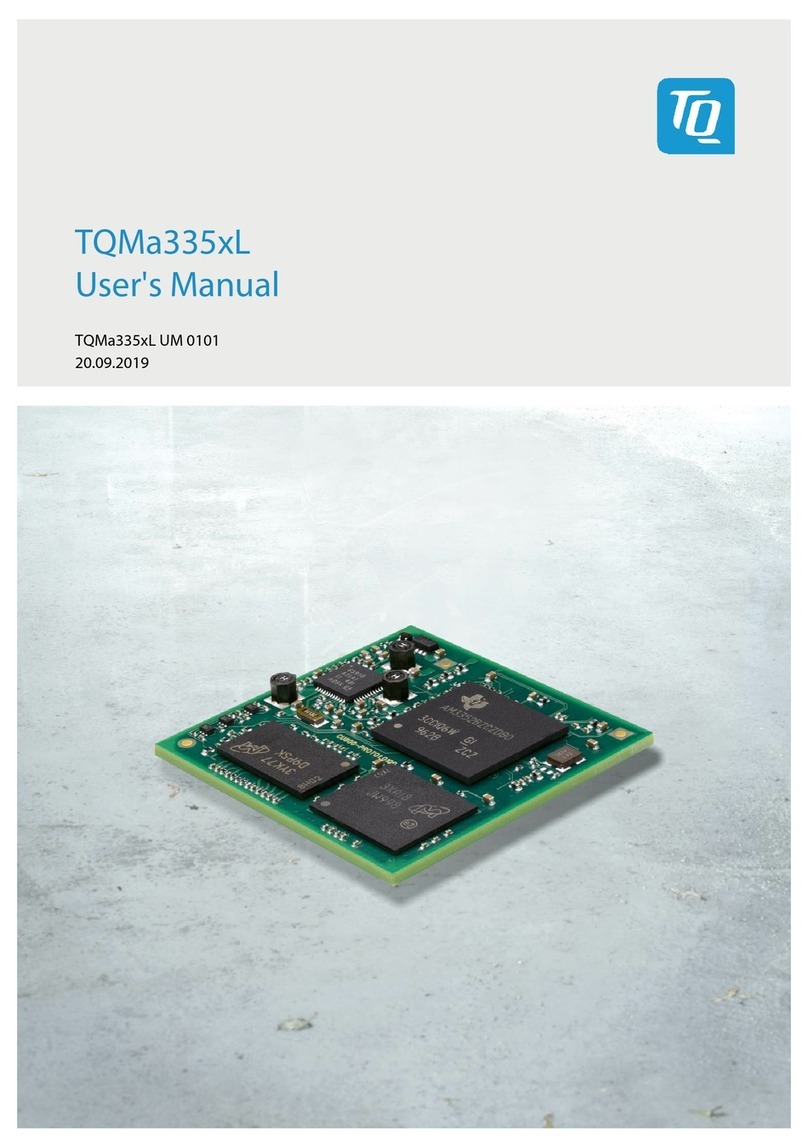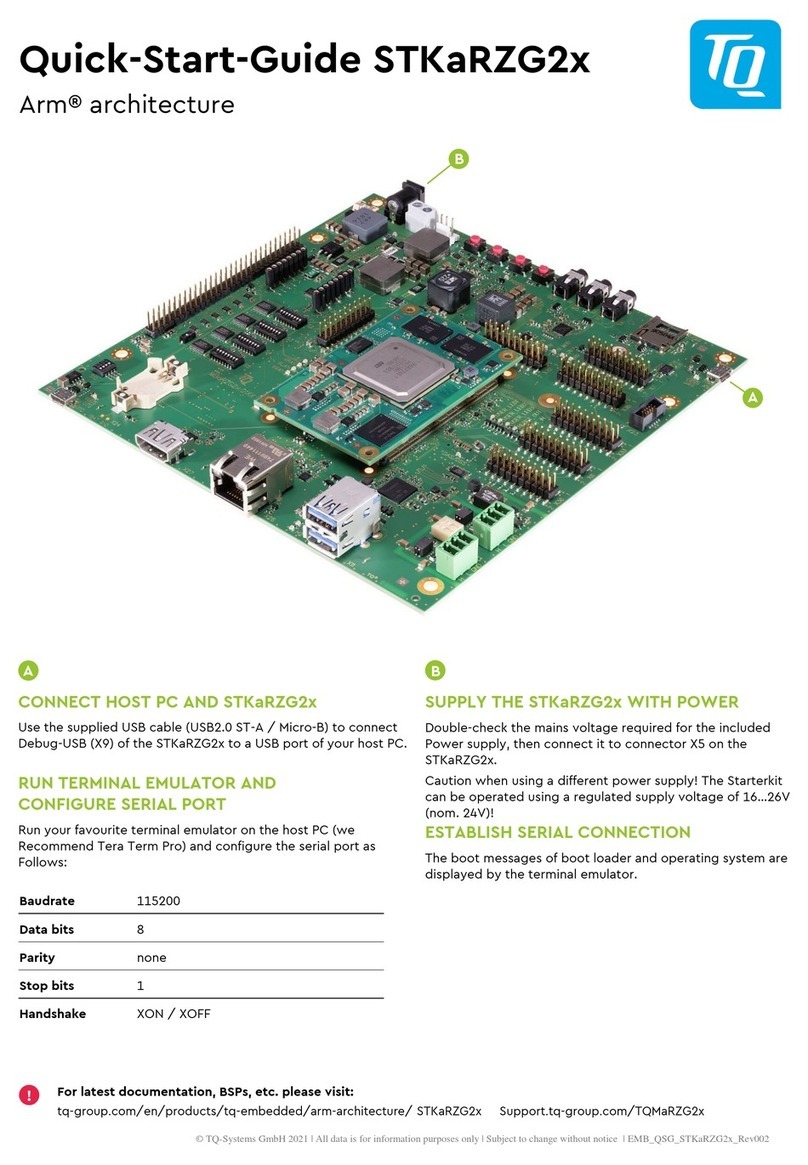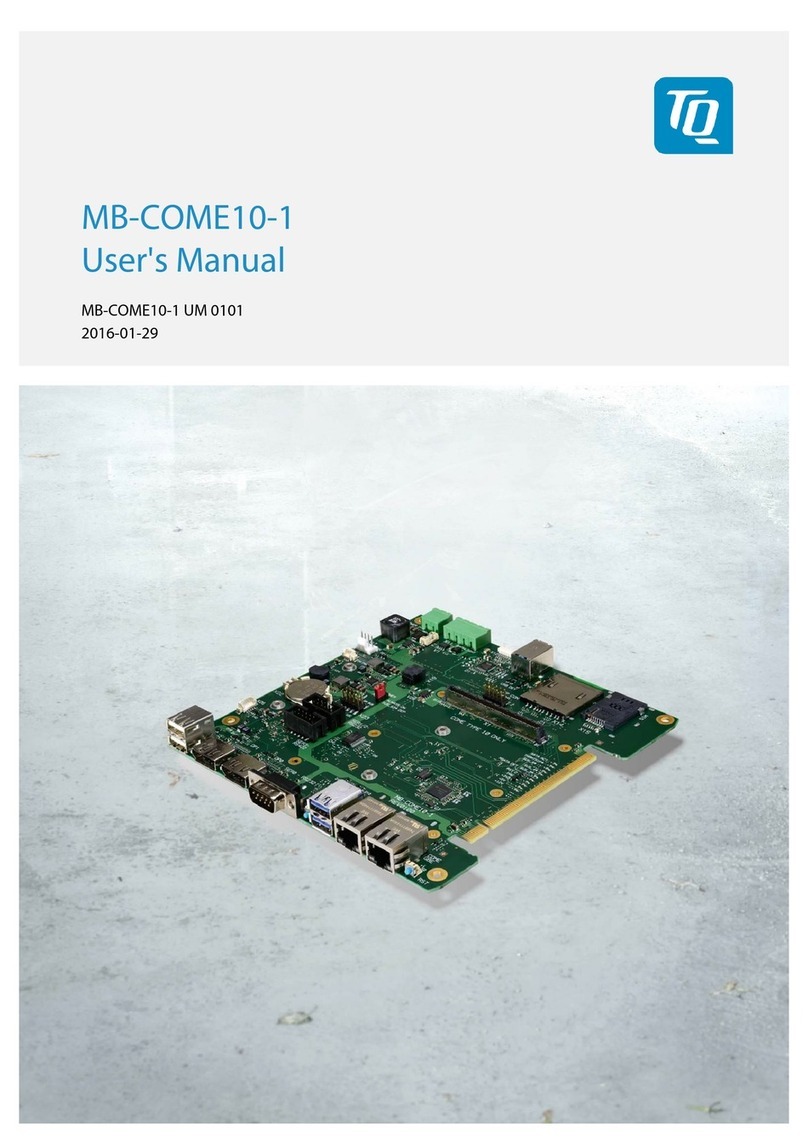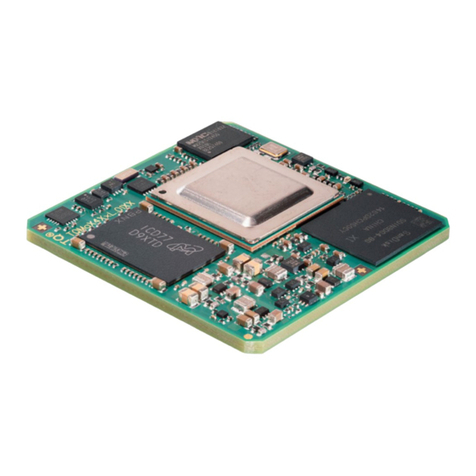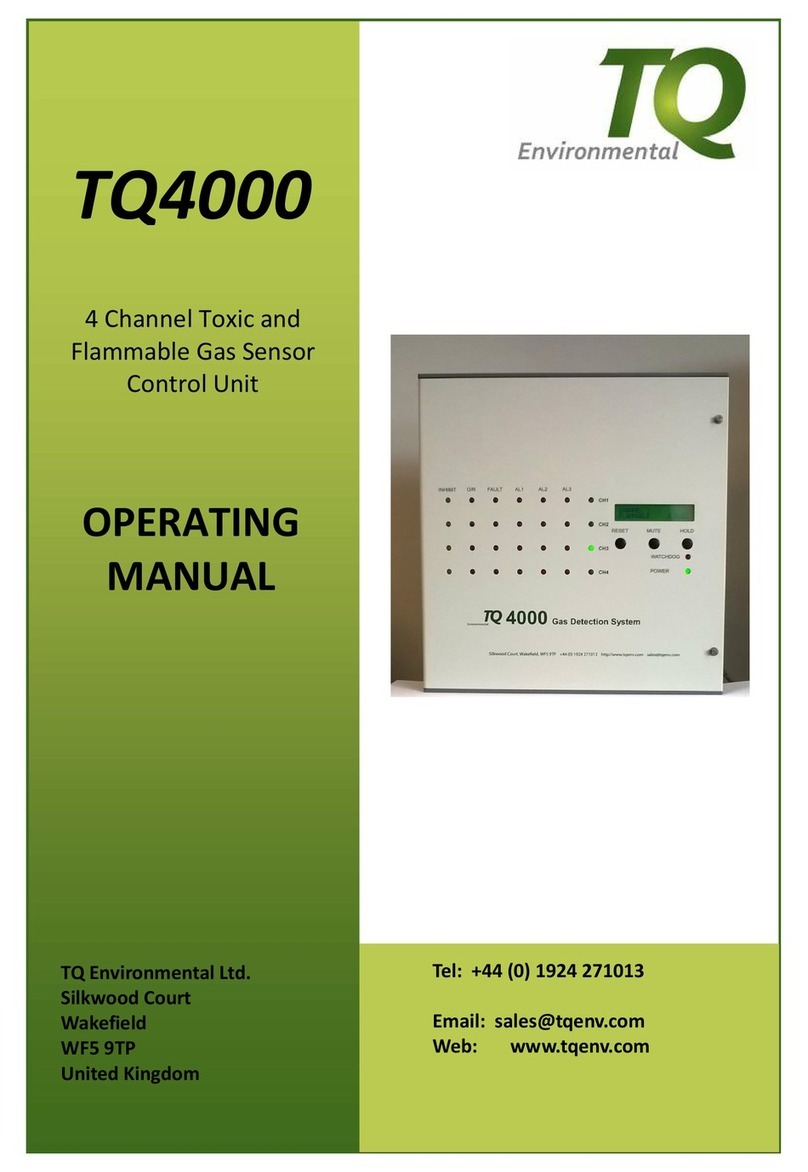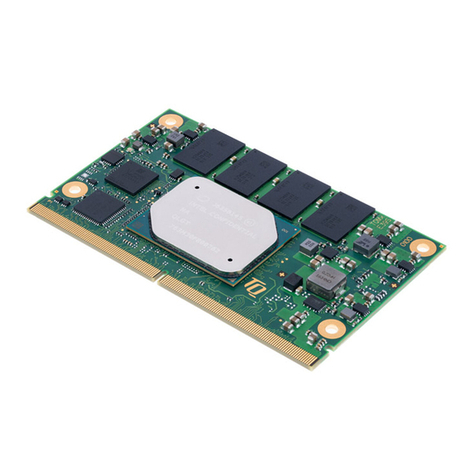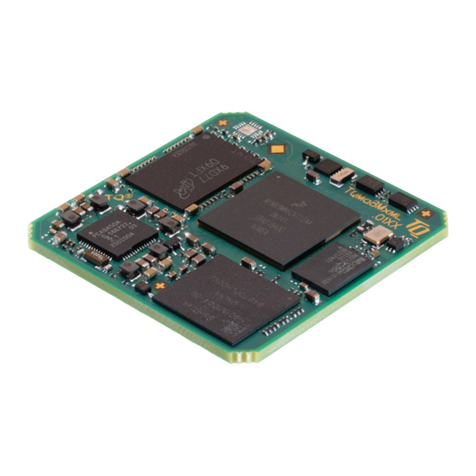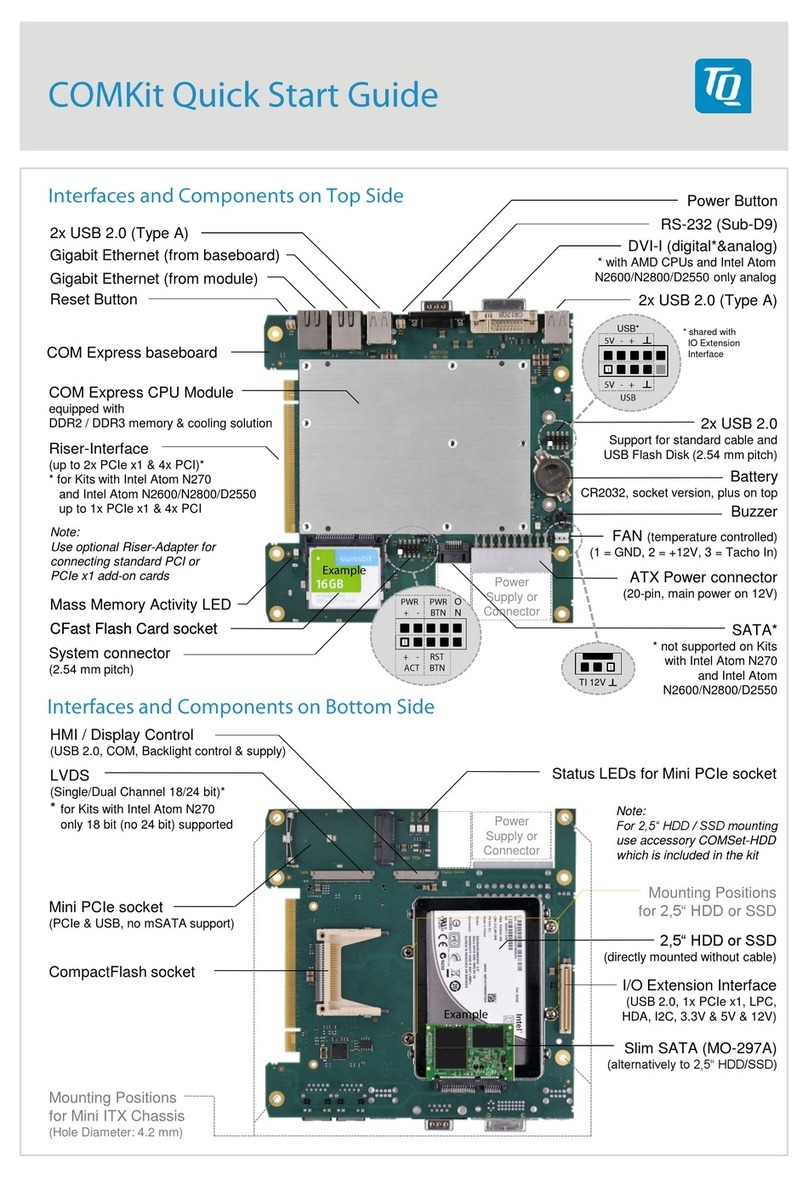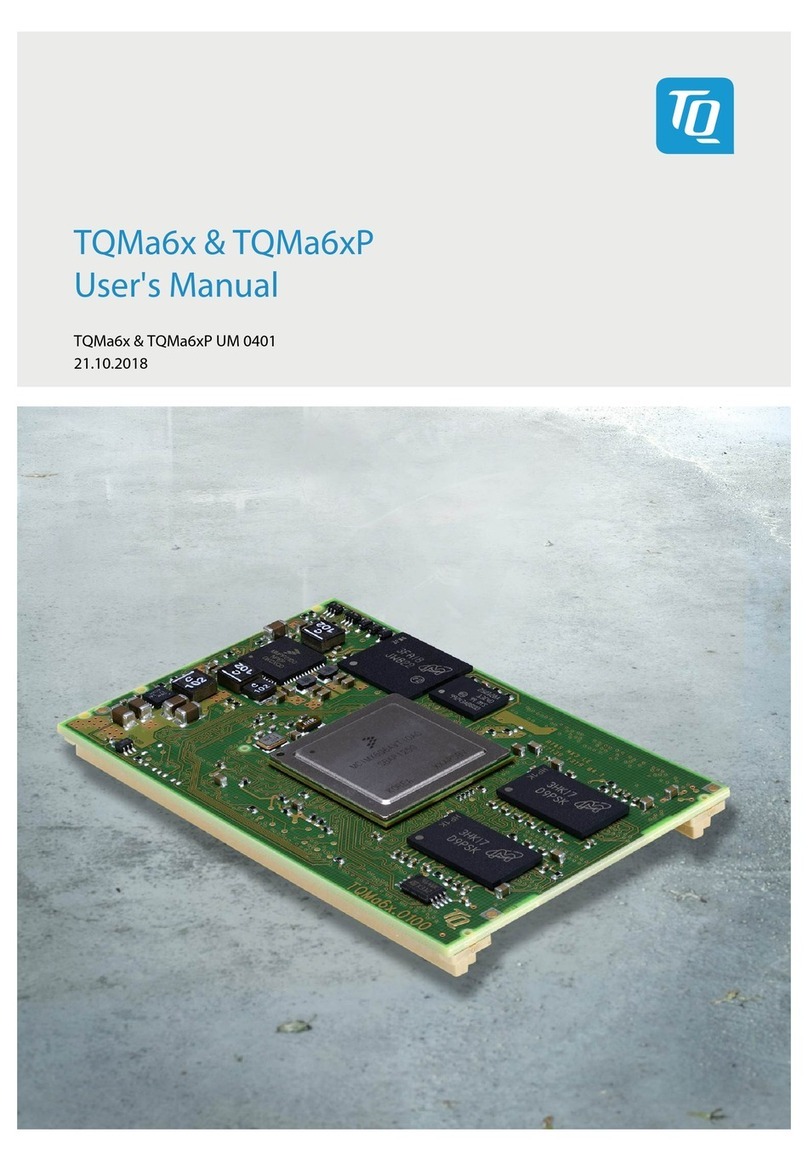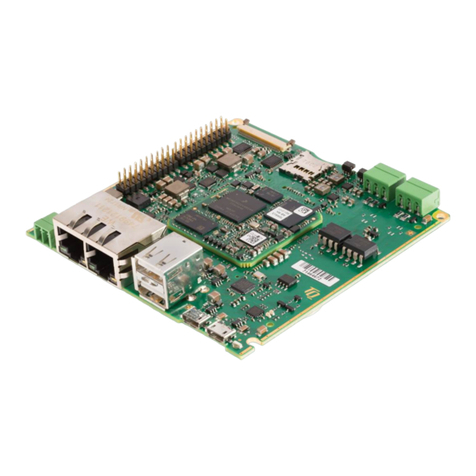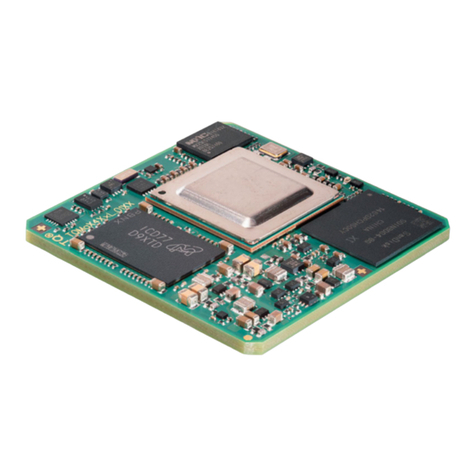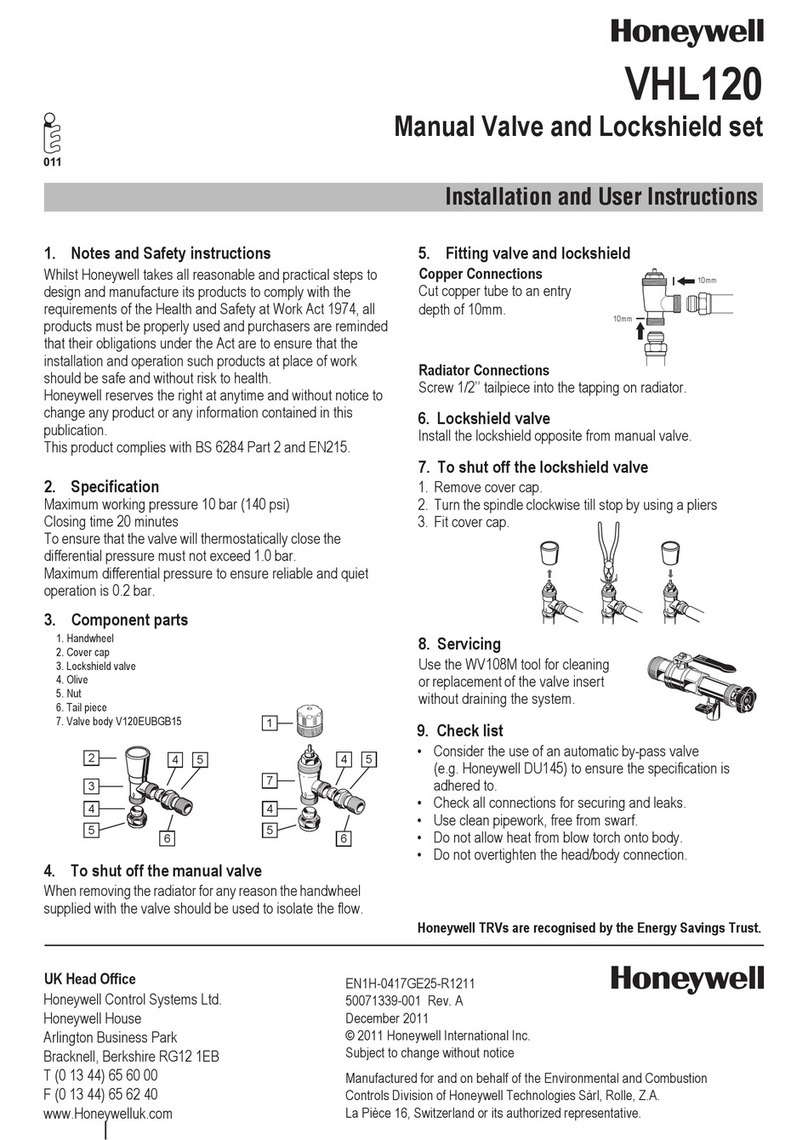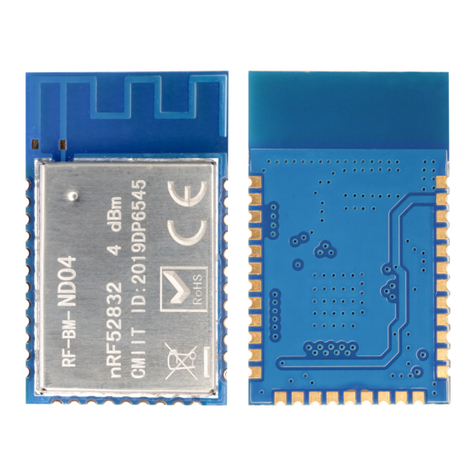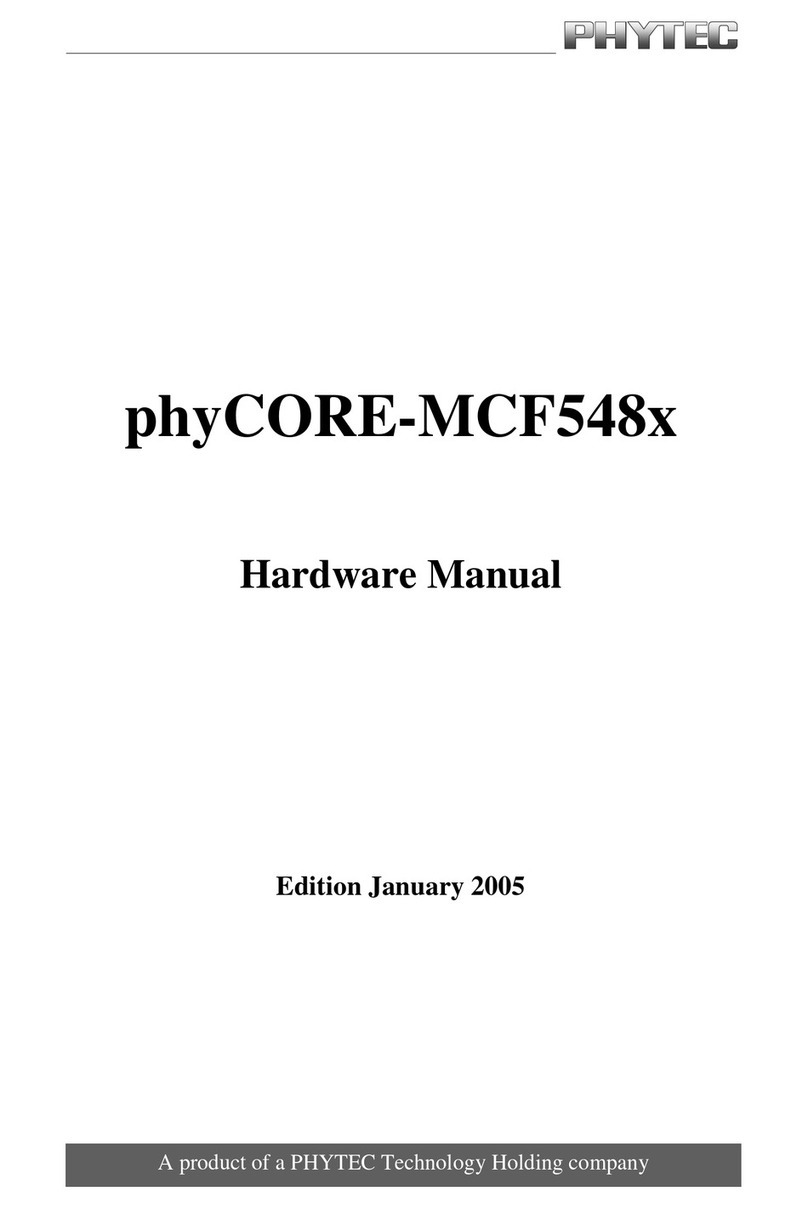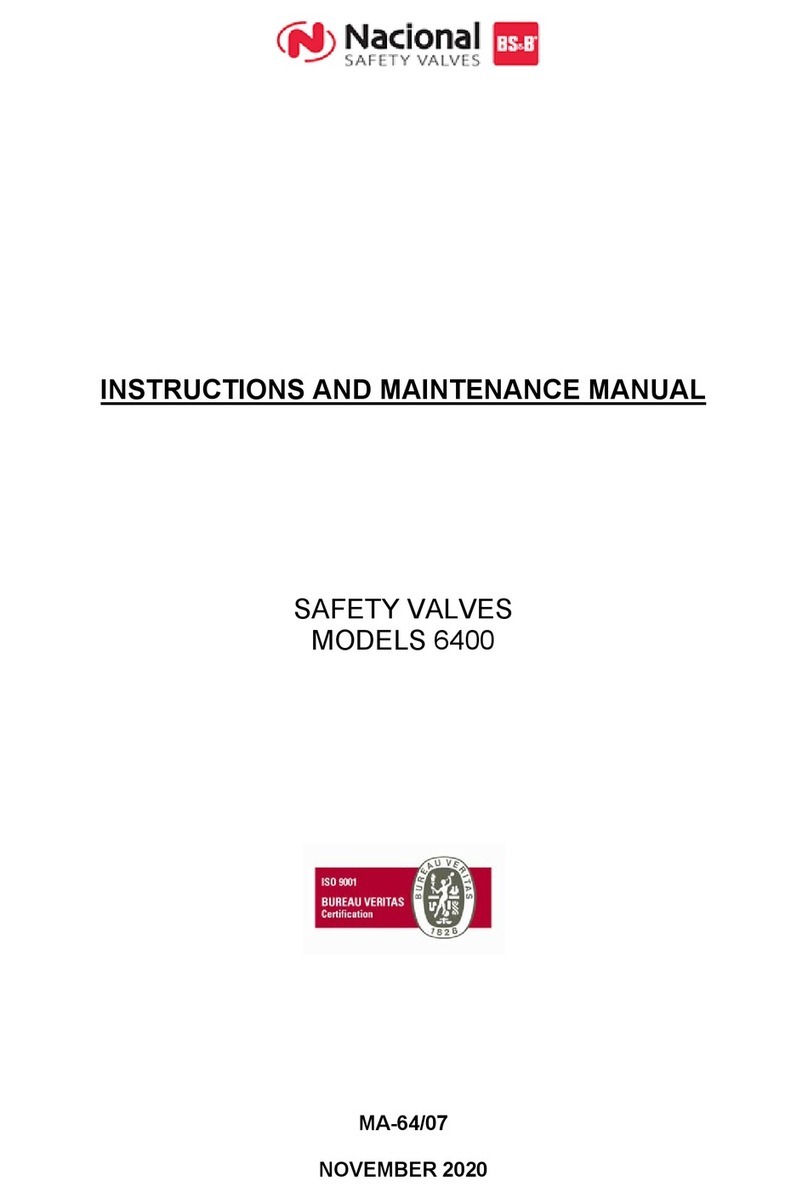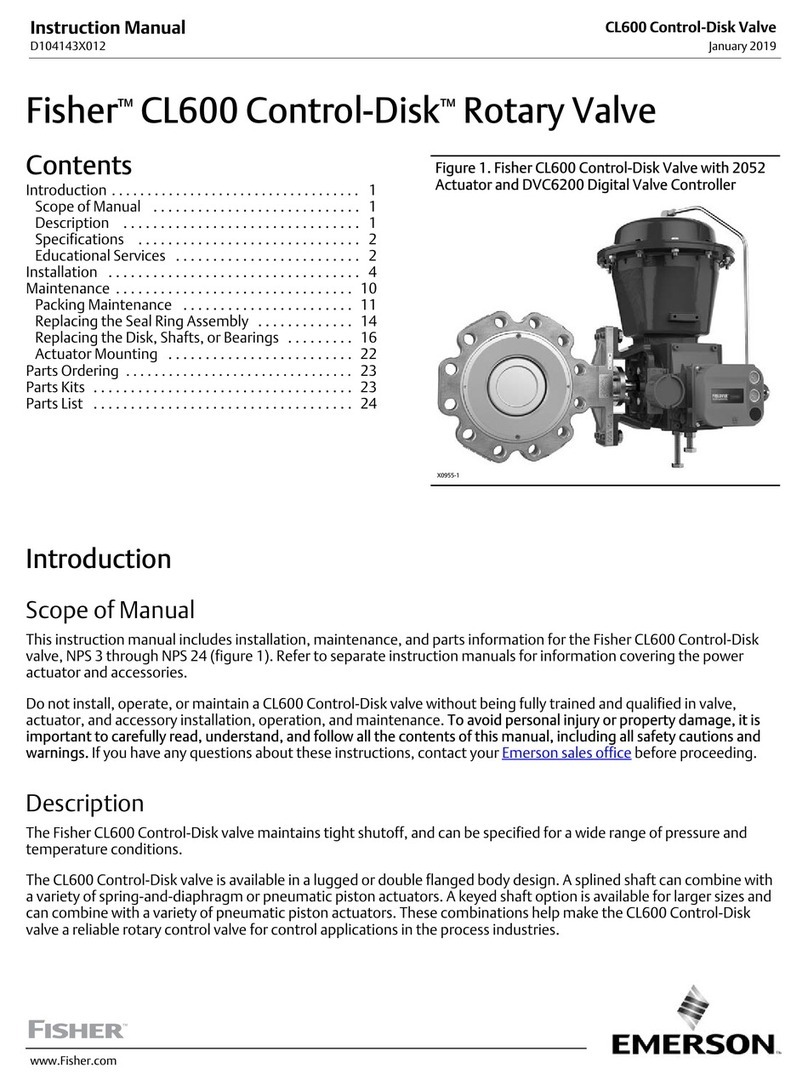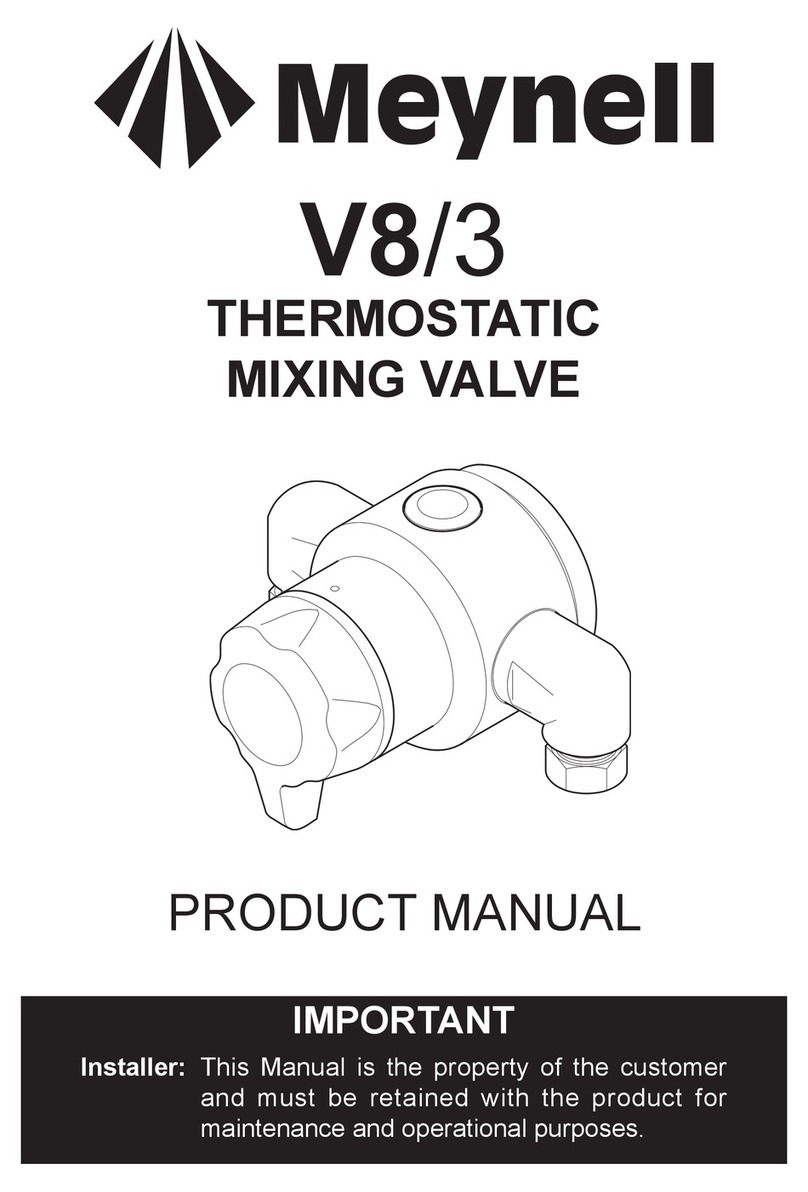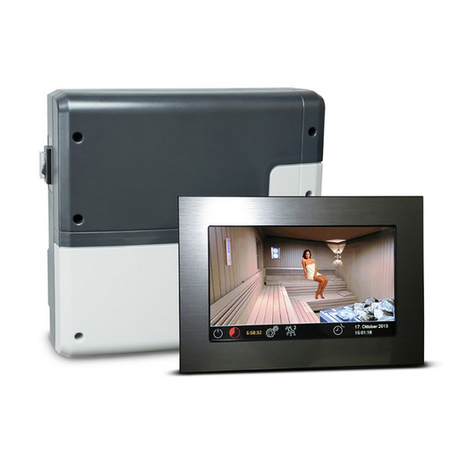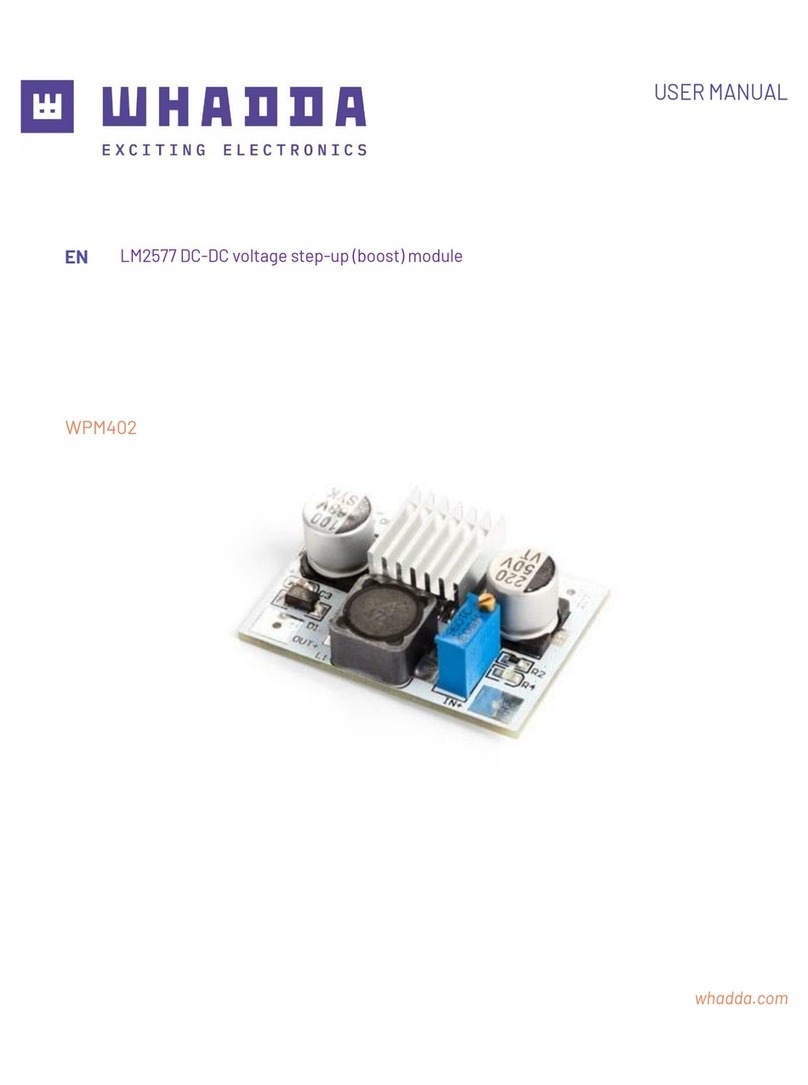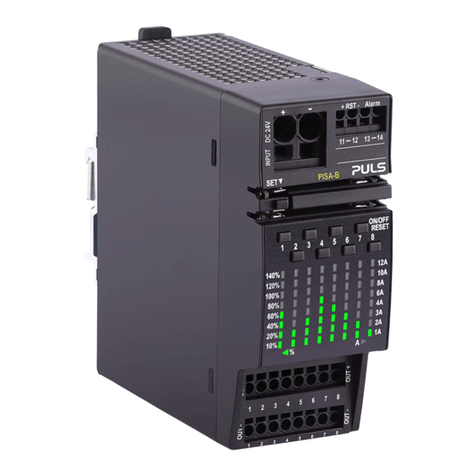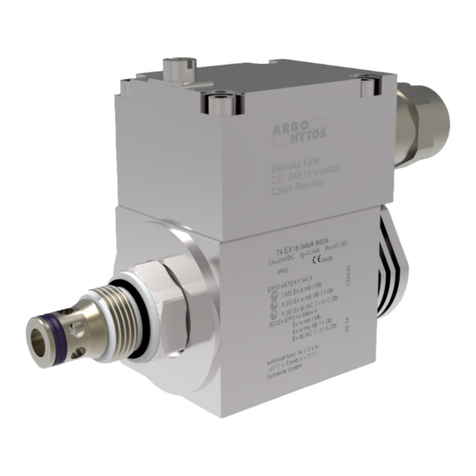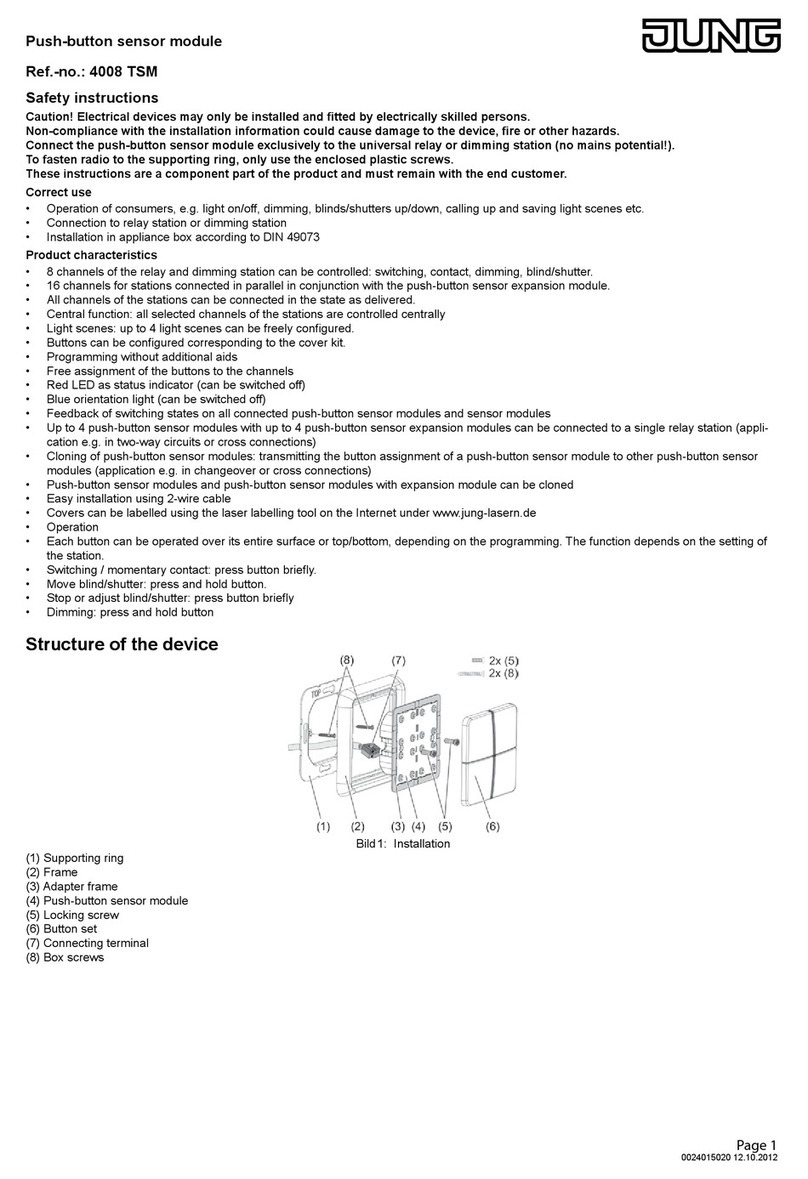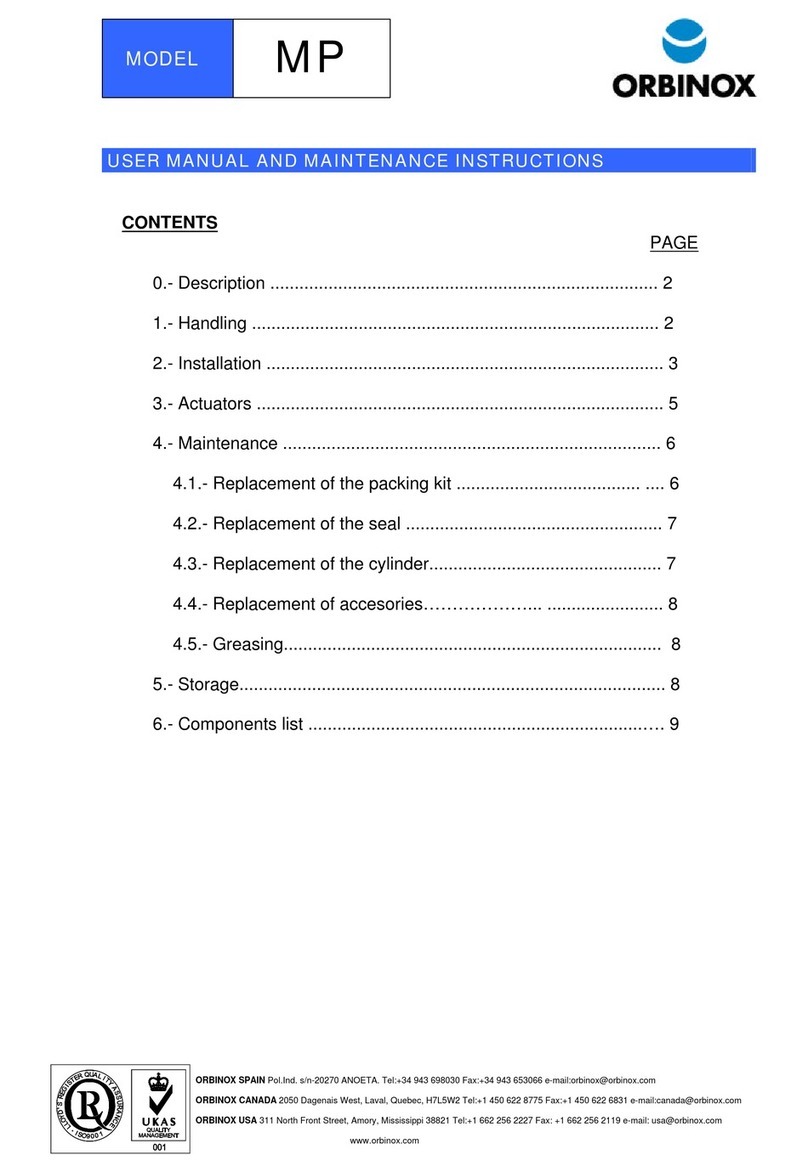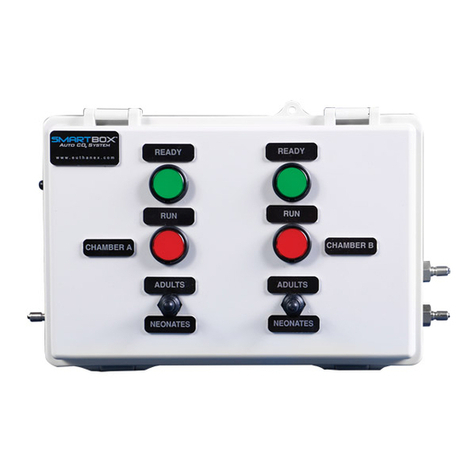TQ MBa6ULxL User manual

MBa6ULxL
User's Manual
MBa6ULxL UM 0101
26.10.2018

User's Manual l MBa6ULxL UM 0101 l © 2018, TQ-Systems Gmb Page i
TABLE OF CONTENTS
1. ABOUT T IS MANUAL ........................................................................................................................................................................1
1.1 Copyright and license expenses .....................................................................................................................................................1
1.2 Registered trademarks.......................................................................................................................................................................1
1.3 Disclaimer ..............................................................................................................................................................................................1
1.4 Imprint ....................................................................................................................................................................................................1
1.5 Tips on safety ........................................................................................................................................................................................2
1.6 Symbols and typographic conventions........................................................................................................................................2
1.7 andling and ESD tips........................................................................................................................................................................2
1.8 Naming of signals................................................................................................................................................................................3
1.9 Further applicable documents / presumed knowledge..........................................................................................................3
2. BRIEF DESCRIPTION.............................................................................................................................................................................3
3. TEC NICAL DATA ................................................................................................................................................................................4
3.1 System architecture and functionality..........................................................................................................................................4
3.1.1 MBa6ULxL Block diagram .................................................................................................................................................................4
3.1.2 Functionality .........................................................................................................................................................................................4
4. ELECTRONICS........................................................................................................................................................................................5
4.1 System components...........................................................................................................................................................................5
4.1.1 TQMa6ULxL ...........................................................................................................................................................................................5
4.1.2 Boot-Mode configuration .................................................................................................................................................................6
4.1.3 I2C address mapping...........................................................................................................................................................................8
4.1.4 Port replicator PCA9554BS signals.................................................................................................................................................9
4.1.5 Temperature sensor / SPD EEPROM...............................................................................................................................................9
4.1.6 RTC supply .............................................................................................................................................................................................9
4.1.7 Reset and Power ............................................................................................................................................................................... 10
4.1.8 Status LED ........................................................................................................................................................................................... 10
4.2 Communication interfaces ............................................................................................................................................................ 11
4.2.1 USB 2.0 i-Speed ost .................................................................................................................................................................... 11
4.2.2 USB 2.0 i-Speed OTG..................................................................................................................................................................... 12
4.2.3 Ethernet............................................................................................................................................................................................... 13
4.2.4 CAN ....................................................................................................................................................................................................... 14
4.2.5 Display interface ............................................................................................................................................................................... 14
4.2.6 Touch controller................................................................................................................................................................................ 15
4.2.7 Backlight control............................................................................................................................................................................... 15
4.2.8 Micro SD card connector................................................................................................................................................................ 16
4.2.9 Mini PCIe and SIM card socket...................................................................................................................................................... 17
4.2.10 SIM card socket.................................................................................................................................................................................. 19
4.2.11 20-pin headers................................................................................................................................................................................... 20
4.3 Diagnostic- and user interfaces.................................................................................................................................................... 21
4.3.1 Power-On and Reset-button ......................................................................................................................................................... 21
4.3.2 CAN termination............................................................................................................................................................................... 21
4.3.3 Debug interfaces RS-232 / USB..................................................................................................................................................... 21
4.4 Power supply ..................................................................................................................................................................................... 22
4.4.1 Protective circuitry ........................................................................................................................................................................... 22
4.4.2 Power consumption ........................................................................................................................................................................ 22
4.4.3 Power supply connector ................................................................................................................................................................ 22

User's Manual l MBa6ULxL UM 0101 l © 2018, TQ-Systems Gmb Page ii
TABLE OF CONTENTS (continued)
5. SOFTWARE.......................................................................................................................................................................................... 23
6. MEC ANICS........................................................................................................................................................................................ 24
6.1 Dimensions......................................................................................................................................................................................... 24
6.2 Thermal management .................................................................................................................................................................... 24
6.3 Assembly............................................................................................................................................................................................. 25
7. SAFETY REQUIREMENTS AND PROTECTIVE REGULATIONS ................................................................................................. 26
7.1 EMC....................................................................................................................................................................................................... 26
7.2 ESD ........................................................................................................................................................................................................ 26
7.3 Operational safety and personal security ................................................................................................................................. 26
8. CLIMATIC AND OPERATIONAL CONDITIONS ........................................................................................................................... 26
8.1 Protection against external effects ............................................................................................................................................. 26
8.2 Reliability and service life............................................................................................................................................................... 26
9. ENVIRONMENT PROTECTION........................................................................................................................................................ 27
9.1 Ro S ..................................................................................................................................................................................................... 27
9.2 WEEE®................................................................................................................................................................................................... 27
9.3 REAC ® ................................................................................................................................................................................................ 27
9.4 EuP......................................................................................................................................................................................................... 27
9.5 Packaging............................................................................................................................................................................................ 27
9.6 Batteries............................................................................................................................................................................................... 27
9.6.1 General notes..................................................................................................................................................................................... 27
9.6.2 Lithium batteries............................................................................................................................................................................... 27
9.7 Other entries ...................................................................................................................................................................................... 27
10. APPENDIX............................................................................................................................................................................................ 28
10.1 Acronyms and definitions.............................................................................................................................................................. 28
10.2 References........................................................................................................................................................................................... 30

User's Manual l MBa6ULxL UM 0101 l © 2018, TQ-Systems Gmb Page iii
TABLE DIRECTORY
Table 1: Terms and Conventions .............................................................................................................................................................2
Table 2: Overview interfaces.....................................................................................................................................................................4
Table 3: Boot-Mode configuration..........................................................................................................................................................7
Table 4: Boot-Mode configuration DIP switches – S13, S16............................................................................................................7
Table 5: I2C4 address assignment...........................................................................................................................................................8
Table 6: Port replicator PCA9554BS signals..........................................................................................................................................9
Table 7: RTC supply, components...........................................................................................................................................................9
Table 8: TQMa6ULxL Reset and power-on signals .......................................................................................................................... 10
Table 9 Pinout USB ost 1 & 2, stacked USB Type-A – X12.......................................................................................................... 11
Table 10 Pinout USB ost 3, Mini PCIe 1 – X25.................................................................................................................................. 11
Table 11 Pinout USB ost 4, Mini PCIe 2 – X24.................................................................................................................................. 11
Table 12: Characteristics USB ................................................................................................................................................................... 11
Table 13: Pinout USB- ost OTG – X15................................................................................................................................................... 12
Table 14: Characteristics USB 2.0 i-Speed OTG................................................................................................................................ 12
Table 15: Pinout Ethernet 1 – X14, left .................................................................................................................................................. 13
Table 16: Pinout Ethernet 2 – X14, right ............................................................................................................................................... 13
Table 17: Pinout CAN1, CAN2 – X1, X2.................................................................................................................................................. 14
Table 18: Pinout LCD interface, X19....................................................................................................................................................... 15
Table 19: Pinout Micro SD card socket – X13 ...................................................................................................................................... 16
Table 20: Current load Mini PCIe............................................................................................................................................................. 17
Table 21: Pinout Mini PCIe – X24, X25; SIM card socket – X12....................................................................................................... 18
Table 22: Pinout SIM card socket – X12 ................................................................................................................................................ 19
Table 23: Pinout header 1 – X22.............................................................................................................................................................. 20
Table 24: Pinout header 2 – X23.............................................................................................................................................................. 20
Table 25: Pinout debug USB – X10......................................................................................................................................................... 21
Table 26: Debug interface selection – S16-1 ....................................................................................................................................... 21
Table 27: Software interfaces................................................................................................................................................................... 23
Table 28: Climatic and operational conditions MBa6ULxL, extended temperature range................................................... 26
Table 29: Acronyms..................................................................................................................................................................................... 28
Table 30: Further applicable documents.............................................................................................................................................. 30

User's Manual l MBa6ULxL UM 0101 l © 2018, TQ-Systems Gmb Page iv
ILLUSTRATION DIRECTORY
Illustration 1: Block diagram MBa6ULxL..........................................................................................................................................................4
Illustration 2: Block diagram TQMa6ULxL.......................................................................................................................................................5
Illustration 3: Block diagram Boot Mode .........................................................................................................................................................6
Illustration 4: Position of Boot-Mode configuration DIP switches – S13, S16......................................................................................7
Illustration 5: Block diagram I2C busses ...........................................................................................................................................................8
Illustration 6: Reset and Power button – S1, S2.......................................................................................................................................... 10
Illustration 7: Block diagram USB ost interfaces...................................................................................................................................... 11
Illustration 8: Block diagram USB 2.0 i-Speed OTG................................................................................................................................. 12
Illustration 9: Block diagram Ethernet 100 BASE-T.................................................................................................................................... 13
Illustration 10: Block diagram CAN................................................................................................................................................................... 14
Illustration 11: Block diagram display interface, X19 .................................................................................................................................. 14
Illustration 12: Block diagram Micro SD card socket – X13 ....................................................................................................................... 16
Illustration 13: Block diagram Mini PCIe ......................................................................................................................................................... 17
Illustration 14: Block diagram of Starterkit headers – X22, X23............................................................................................................... 20
Illustration 15: Block diagram debug interfaces RS-232 / USB................................................................................................................. 21
Illustration 16: Block diagram power supply................................................................................................................................................. 22
Illustration 17: Block diagram input protection............................................................................................................................................ 22
Illustration 18: MBa6ULxL dimensions ............................................................................................................................................................ 24
Illustration 19: MBa6ULxL, revision 02xx, component placement top.................................................................................................. 25
Illustration 20: MBa6ULxL, revision 02xx, component placement bottom.......................................................................................... 25
REVISION ISTORY
Rev. Date Name Pos. Modification
0100 06.06.2018 Petz Initial release
0101 26.10.2018 Petz Table 28
9
“Package temperature” replaced with “Case temperature”
Chapter reworked

User's Manual l MBa6ULxL UM 0101 l © 2018, TQ-Systems Gmb Page 1
1. ABOUT THIS MANUAL
1.1 Copyright and license expenses
Copyright protected © 2018 by TQ-Systems Gmb .
This User's Manual may not be copied, reproduced, translated, changed or distributed, completely or partially in electronic,
machine readable, or in any other form without the written consent of TQ-Systems Gmb .
The drivers and utilities for the components used as well as the BIOS are subject to copyrights of the respective manufacturers.
The licence conditions of the respective manufacturer are to be adhered to.
Bootloader-licence expenses are paid by TQ-Systems Gmb and are included in the price.
Licence expenses for the operating system and applications are not taken into consideration and must be calculated / declared
separately.
1. Registered trademarks
TQ-Systems Gmb aims to adhere to copyrights of all graphics and texts used in all publications, and strives to use original
or license-free graphics and texts.
All brand names and trademarks mentioned in this User's Manual, including those protected by a third party, unless specified
otherwise in writing, are subjected to the specifications of the current copyright laws and the proprietary laws of the present
registered proprietor without any limitation. One should conclude that brand and trademarks are rightly protected by a third
party.
1.3 Disclaimer
TQ-Systems Gmb does not guarantee that the information in this User's Manual is up-to-date, correct, complete or of good
quality. Nor does TQ-Systems Gmb assume guarantee for further usage of the information. Liability claims against TQ-Systems
Gmb , referring to material or non-material related damages caused, due to usage or non-usage of the information given in this
User's Manual, or due to usage of erroneous or incomplete information, are exempted, as long as there is no proven intentional
or negligent fault of TQ-Systems Gmb .
TQ-Systems Gmb explicitly reserves the rights to change or add to the contents of this User's Manual or parts of it without
special notification.
Important Notice:
Before using the Starterkit MBa6ULxL or parts of the schematics of the MBa6ULxL, you must evaluate it and determine if it is
suitable for your intended application. You assume all risks and liability associated with such use. TQ-Systems Gmb makes no
other warranties including, but not limited to, any implied warranty of merchantability or fitness for a particular purpose. Except
where prohibited by law, TQ-Systems Gmb will not be liable for any indirect, special, incidental or consequential loss or damage
arising from the usage of the Starterkit MBa6ULxL or schematics used, regardless of the legal theory asserted.
1.4 Imprint
TQ-Systems Gmb
Gut Delling, Mühlstraße 2
D-8 9 Seefeld
Tel: +49 8153 9308–0
Fax: +49 8153 9308–4223
E-Mail: Info@TQ-Group
Web: TQ-Group

User's Manual l MBa6ULxL UM 0101 l © 2018, TQ-Systems Gmb Page 2
1.5 Tips on safety
Improper or incorrect handling of the MBa6ULxL can substantially reduce its life span.
1.6 Symbols and typographic conventions
Table 1: Terms and Conventions
Symbol Meaning
This symbol represents the handling of electrostatic-sensitive modules and / or components. These
components are often damaged / destroyed by the transmission of a voltage higher than about 50 V.
A human body usually only experiences electrostatic discharges above approximately 3,000 V.
This symbol indicates the possible use of voltages higher than 24 V.
Please note the relevant statutory regulations in this regard.
Non-compliance with these regulations can lead to serious damage to your health and also cause
damage / destruction of the component.
This symbol indicates a possible source of danger. Acting against the procedure described can lead to
possible damage to your health and / or cause damage / destruction of the material used.
This symbol represents important details or aspects for working with the MBa6ULxL.
Command A font with fixed-width is used to denote commands, file names, or menu items.
1.7 Handling and ESD tips
General handling of the MBa6ULxL:
The MBa6ULxL may only be used and serviced by certified personnel who have taken note of the
information, the safety regulations in this document and all related rules and regulations.
A general rule is: do not touch the MBa6ULxL during operation. This is especially important when
switching on, changing jumper settings or connecting other devices without ensuring beforehand
that the power supply of the system has been switched off.
Violation of this guideline may result in damage / destruction of the MBa6ULxL and be dangerous
to your health.
Improper handling of your MBa6ULxL would render the guarantee invalid.
Proper ESD handling:
The electronic components of the MBa6ULxL are sensitive to electrostatic discharge (ESD).
Always wear antistatic clothing, use ESD-safe tools, packing materials etc., and operate the MBa6ULxL
in an ESD-safe environment. Especially when you switch modules on, change jumper settings, or
connect other devices.

User's Manual l MBa6ULxL UM 0101 l © 2018, TQ-Systems Gmb Page 3
1.8 Naming of signals
A hash mark (#) at the end of the signal name indicates a low-active signal.
Example: RESET#
If a signal can switch between two functions and if this is noted in the name of the signal, the low-active function is marked with
a hash mark and shown at the end.
Example: C / D#
If a signal has multiple functions, the individual functions are separated by slashes when they are important for the wiring.
The identification of the individual functions follows the above conventions.
Example: WE2# / OE#
1.9 Further applicable documents / presumed knowledge
•Specifications and manual of the modules used:
These documents describe the service, functionality and special characteristics of the module used (incl. BIOS).
•Specifications of the components used:
The manufacturer’s specifications of the components used, for example CompactFlash cards, are to be taken note of.
They contain, if applicable, additional information that must be taken note of for safe and reliable operation.
These documents are stored at TQ-Systems Gmb .
•Chip errata:
It is the user’s responsibility to make sure all errata published by the manufacturer of each component are taken note of.
The manufacturer’s advice should be followed.
•Software behaviour:
No warranty can be given, nor responsibility taken for any unexpected software behaviour due to deficient components.
•General expertise:
Expertise in electrical engineering / computer engineering is required for the installation and the use of the device.
The following documents are required to fully comprehend the following contents:
•MBa6ULxL circuit diagram
•TQMa6ULxL User's Manual
•IMX6ULRM Reference Manual
•U-Boot documentation: www.denx.de/wiki/U-Boot/Documentation
•PTXdist documentation: www.ptxdist.de
•TQ-Support Wiki: support.tq-group.com/doku.php?id=en:arm:TQMa6ULx
. BRIEF DESCRIPTION
This User's Manual describes the hardware of the MBa6ULxL, revision 02xx. The MBa6ULxL is designed as a carrier board for the
LGA version of the TQMa6ULxL. The illustrations in this User's Manual also refer to the TQMa6ULxL.
In addition the standard interfaces routed to the user’s connectors, more interfaces like CAN, UART, RS-232, GPIO, I2C and SPI
interfaces are routed to headers on the MBa6ULxL. The characteristics of the i.MX6ULx can be evaluated, and therefore the
software development can start immediately.
Currently the MBa6ULxL supports TQMa6ULxL modules with NXP i.MX6UL CPU derivatives MCIMX6G2CVM05AA and
MCIMX6G3CVM05AA. Currently i.MX6ULL CPUs are not supported.

User's Manual l MBa6ULxL UM 0101 l © 2018, TQ-Systems Gmb Page 4
3. TECHNICAL DATA
3.1 System architecture and functionality
3.1.1 MBa6ULxL Block diagram
CAN
Transceiver
RS232
Transceiver
CAN
Transceiver
RS232
Transceiver
10/100 MBit
Ethernet PHY
10/100 MBit
Ethernet PHY
USB HOST 2
TypeA)
TQMa6ULxL
USB OTG
Micro USB)
Ethernet 2
RJ45)
Ethernet 1
RJ45)
SD card
socket
Mini PCIe 2
20pin 2.54 mm header
PowerIN
DC socket)
CSI
I²C
SPI
GPIO
USB 20
Hub
USB HOST 1
TypeA)
CAN 1
Pin header)
40pin.
FFC connector
Touch
Controller
CAN 2
Pin header)
Reset/PowerOn
buttons
Boot Mode
DIP switch)
120 CAN
termination
DIP switch)
Internal
Supply
USBOTG 2
RMII 1
RMII 2
CAN1
CAN2
LICELL
USBOTG 1
I2C4
LCD
Power supply
3.3 V / 5 V
USB Host 4
USB HOST 3
internal)
Galvanically
isolated
20pin 2.54 mm header
SDHC
Battery
CR2032)
Mini PCIe 1 SIM card
socket
USB Host 3
Protective
Ciruitry
MBa6ULxL
USB
Transceiver
USB Debug
Micro USB)
Analog
Switch
UART3
UART1
RS232.1 RS232.2
UART1 FTDI
Illustration 1: Block diagram MBa6ULxL
3.1.2 Functionality
Core of the MBa6ULxL is the TQMa6ULxL, which is based on an NXP i.MX6ULx CPU. In addition to the standard communication
interfaces like USB, Ethernet, RS-232, etc. other signals and interfaces are routed to two 20-pin 2.54 mm headers.
The MBa6ULxL provides the following interfaces and functions:
Table 2: Overview interfaces
Connector Interface Qty. Type of connector Remark
X1, X2 CAN 2.0B 2 Phoenix contact, MC1.5/3-G-3.5 CAN transceiver, galvanically separated
X10 USB / RS-232 1 Single USB receptacle Micro-AB RS-232 debug interface (via FTDI as USB)
X12 SIM card 1 SIM card socket –
X13 SD card 1 Micro SD card connector –
X14 Ethernet 2 RJ45 receptacle 10/100BASE-T, double RJ45 with integrated magnetics
X15 USB-OTG 1 Single USB receptacle Micro-AB USB OTG
X16 USB ost 2 Stacked USB receptacle Type-A USB ost 1 / 2
X19 Graphics 1 40-pin FFC, 0.5 mm Meets EDT platform concept, for displays with PCT or RT
X21 Power 1 Phoenix contact, MC1,5/2-G-3,5 Power supply 6.5 V to 30 V
X22 GPIOs 1 20-pin header, 2.54 mm pitch I2C4, SPI2, RS-232.1, RS-232.2, PWM, Ext-Wakeup, 2 x ADC, 3.3 V, 5.0 V
X23 GPIOs 1 20-pin header, 2.54 mm pitch GPIOS, I2C2, UART6, 3.3 V, 5.0 V
X24 Mini PCIe 1 Mini PCIe connector LoRa (assembly option)
X25 Mini PCIe 1 Mini PCIe connector Mini PCIe (only USB), with SIM card socket (assembly option)
G2 Battery 1 SMTU2032 Battery / GoldCap for RTC

User's Manual l MBa6ULxL UM 0101 l © 2018, TQ-Systems Gmb Page 5
4. ELECTRONICS
4.1 System components
4.1.1 TQMa6ULxL
Illustration 2: Block diagram TQMa6ULxL
The TQMa6ULxL with the i.MX6ULx CPU is the central system component. It provides DDR3L SDRAM, eMMC, NOR flash and
EEPROM memory. All voltages required by the TQMa6ULxL are derived from the supply voltage. More information is to be taken
from the accompanying User’s Manual of the TQMa6ULxL (7).
The boot behaviour of the TQMa6ULxL can be customised. The required Boot-Mode configuration can be set with DIP switches
on the MBa6ULxL, see chapter 4.1.2.

User's Manual l MBa6ULxL UM 0101 l © 2018, TQ-Systems Gmb Page 6
4.1.2 Boot-Mode configuration
The TQMa6ULxL can boot from different media:
•eMMC (on TQMa6ULxL)
•QSPI NOR flash
•SD card
The settings of DIP switches S13 and S16 determine, which device is selected to boot from.
Illustration 3: Block diagram Boot Mode
Attention: Flickering display
During the boot process, the LCD_DATA signals are not separated from the display. It may therefore
be necessary to deactivate the display at system start-up. This can be implemented by appropriate
software adaptation via the Data Enable Input.

User's Manual l MBa6ULxL UM 0101 l © 2018, TQ-Systems Gmb Page 7
The following tables describe the DIP switch settings for each boot source.
Further settings such as transfer modes and CPU clock are to be taken from the TQMa6ULxL User's Manual (7).
Table 3: Boot-Mode configuration
Boot-Mode S13-2, BOOT_MODE1 S13-1, BOOT_MODE0
Boot from eFuses OFF OFF
Serial Downloader OFF ON
Internal Boot ON OFF
Reserved ON ON
Table 4: Boot-Mode configuration DIP switches – S13, S16
DIP switch eMMC SD card QSPI NOR Serial-Downloader
1 OFF OFF OFF ON
S13 2 ON ON ON OFF
1 X X X X
2 ON OFF X X
3 OFF ON X X
4 ON OFF X X
5 ON ON OFF X
6 ON OFF OFF X
7 OFF OFF ON X
S16
8 OFF ON OFF X
Illustration 4: Position of Boot-Mode configuration DIP switches – S13, S16

User's Manual l MBa6ULxL UM 0101 l © 2018, TQ-Systems Gmb Page 8
4.1.3 I2C address mapping
A port replicator and the I2C touch screen controller can be addressed via I2C4 on the MBa6ULxL.
Table 5 shows the addresses used on the TQMa6ULxL and the MBa6ULxL. The I2C4 bus is also routed to header X22.
The following table shows the address assignment of TQMa6ULxL and MBa6ULxL.
Illustration 5: Block diagram I2C busses
Table 5: I2C4 address assignment
Component Ref ID Address Location
PMIC (PF3000/3001) – 0x08 000 1000b TQMa6ULxL
Temperature sensor (SE97BTP) – 0x1A 001 1010b TQMa6ULxL
Port replicator (PCA9554BS) D20 0x22 010 0010b MBa6ULxL
I2C Touch Screen Controller (STMPE811Q) D9 0x41 100 0001b MBa6ULxL
EEPROM (24LC64T-I_MC) – 0x50 101 0000b TQMa6ULxL
EEPROM (SE97BTP) – 0x32 011 0010b TQMa6ULxL
EEPROM (SE97BTP) – 0x52 101 0010b TQMa6ULxL
RTC (DS1339U-33) – 0x68 110 1000b TQMa6ULxL

User's Manual l MBa6ULxL UM 0101 l © 2018, TQ-Systems Gmb Page 9
4.1.4 Port replicator PCA9554BS signals
The port replicator PCA9554BS with I2C address 0x22 provides the following signals:
Table 6: Port replicator PCA9554BS signals
I/O port Direction Function Remark
IO0 O ENET1_RST# –
IO1 O ENET2_RST# –
IO2 O BOOT_CFG_EN# –
O PWR_EN_3V3_DISPLAY Default
IO3 I ENET1_INT# Alternative
O PWR_EN_1V5 Default
IO4 I ENET2_INT# Alternative
IO5 O LCD.PWRCTRL –
IO6 O LCD.WAKE –
IO7 O PCIE_1.DIS# Alternative: PCIE_2.DIS#
Attention: I2C4 bus
Attention when using I2C4. Since the PMIC can be addressed via I2C4,
errors on the bus can lead to instabilities of the MBa6ULxL!
4.1.5 Temperature sensor / SPD EEPROM
Since there is already a temperature sensor SE97BTP on the TQMa6ULxL, no temperature sensor is provided on the MBa6ULxL.
4.1.6 RTC supply
The TQMa6ULxL provides a discrete RTC. Another RTC is provided by the i.MX6ULx on the TQMa6ULxL.
Both RTCs are supplied via the LICELL.
A lithium battery type CR2032 with very low self-discharge is provided on the MBa6ULxL as a backup supply for both RTCs.
The increased current consumption must be considered, if the i.MX6ULx RTC is used.
This leads to a fast battery discharge. More information can be found in the User’s Manual of the TQMa6ULxL.
For the RTCs installed on the MBa6ULxL the following applies:
Table 7: RTC supply, components
Parameter Value Remark
Coin cell 2.1 V to 3.7 V, typical 3.0 V, 220 mAh –20 °C to +60 °C
Current consumption RTC See TQMa6ULxL User’s Manual Depends on RTC used

User's Manual l MBa6ULxL UM 0101 l © 2018, TQ-Systems Gmb Page 10
4.1.7 Reset and Power
The MBa6ULxL provides a power and a reset button. Signal RESET_OUT# resets all components on the MBa6ULxL.
The following table shows the signals.
Table 8: TQMa6ULxL Reset and power-on signals
Push button Signal TQMa6ULxL pad Direction Remark
S1 RESET_IN# T14 I 10 kΩ PU to 3.3 V on MBa6ULxL
S2 PMIC_PWRON U16 I 10 kΩ PU to 3.3 V on MBa6ULxL
– RESET_OUT# U15 O Resets all components on MBa6ULxL
TQMa6ULxL
Push button S1
RESET_IN#
Push button S2
PMIC_PWRON
RESET_OUT# [System]
Illustration 6: Reset and Power button – S1, S2
4.1.8 Status LED
The MBa6ULxL provides a status LED. The LED shines green during normal operation and orange during reset.

User's Manual l MBa6ULxL UM 0101 l © 2018, TQ-Systems Gmb Page 11
4. Communication interfaces
4.2.1 USB 2.0 i-Speed ost
The MBa6ULxL provides two USB 2.0 ost (double stack USB Type-A) and USB 2.0 ost interfaces at both Mini PCIe connectors.
Illustration 7: Block diagram USB ost interfaces
The following tables show the pinout of the connectors used.
Table 9 Pinout USB ost 1 & 2, stacked USB Type-A – X12
Pin Pin name Signal Direction Remark
1A VBUS USB_ 1_VBUS P 100 µF to DGND + EMI Filter
2A D– USB_ 1_D_N I/O Common Mode Choke in series
3A D+ USB_ 1_D_P I/O Common Mode Choke in series
4A DGND DGND P –
1B VBUS USB_ 2_VBUS P 100 µF to DGND + EMI Filter
2B D– USB_ 2_D_N I/O Common Mode Choke in series
3B D+ USB_ 2_D_P I/O Common Mode Choke in series
4B DGND DGND P –
M1 – M4 DGND DGND P –
Table 10 Pinout USB ost 3, Mini PCIe 1 – X25
Pin Pin name Signal Direction Remark
36 D– USB_ 3_D_N I/O Common Mode Choke in series
38 D+ USB_ 3_D_P I/O Common Mode Choke in series
Table 11 Pinout USB ost 4, Mini PCIe 2 – X24
Pin Pin name Signal Direction Remark
36 D– USB_ 4_D_N I/O Common Mode Choke in series
38 D+ USB_ 4_D_P I/O Common Mode Choke in series
The USB host port of the TQMa6ULxL provides a theoretical data rate of 480 Mbit/s. The data rate is shared amongst the
connected ports. The data rates of the ports can significantly deviate depending on the hardware and software used.
Table 12: Characteristics USB
Parameter Min. Typ. Max. Unit Remark
Voltage 4.75 5 5.25 V –
Current – 500 900 mA –
Read – 15.7 – Mbyte/s USB stick at port 1: 100 Mbyte file, 10 Mbyte block size
Write – 7.4 – Mbyte/s USB stick at port 1: 100 Mbyte file, 10 Mbyte block size

User's Manual l MBa6ULxL UM 0101 l © 2018, TQ-Systems Gmb Page 12
4.2.2 USB 2.0 i-Speed OTG
Both USB-OTG interfaces of the TQMa6ULxL are provided on the MBa6ULxL.
USB-OTG1 is provided at a 5-pin Micro-AB receptacle. USB-OTG2 is connected to the USB hub controller, see 4.2.1.
Both OTG interfaces operate in host mode only.
An OTG or device function is not implemented in software except for the serial downloader.
Illustration 8: Block diagram USB 2.0 i-Speed OTG
The following table shows the pinout of the connector used.
Table 13: Pinout USB- ost OTG – X15
Pin Pin name Signal Direction Remark
1 VBUS USB_OTG2_VBUS P 100 µF to DGND; EMI filter, Imax = 100 mA
2 D– USB_OTG2_D_N I/O Common mode choke in series
3 D+ USB_OTG2_D_P I/O Common mode choke in series
4 ID USB_OTG2.ID I –
5 DGND DGND P –
M1 – M6 DGND DGND P –
The interface can serve as Client or ost. To use this feature, appropriate software support is necessary, however.
The OTG ports of the TQMa6ULxL provide a theoretical data rate of 480 Mbit/s. The data rate can significantly deviate depending
on the hardware and software used.
Table 14: Characteristics USB 2.0 i-Speed OTG
Parameter Min. Typ. Max. Unit Remark
Voltage 4.75 5 5.25 V –
Current – 500 900 mA –
Read – 20.4 – Mbyte/s USB 2.0 stick: 100 Mbyte file, 10 Mbyte block size
Write – 8.0 – Mbyte/s USB 2.0 stick: 100 Mbyte file, 10 Mbyte block size

User's Manual l MBa6ULxL UM 0101 l © 2018, TQ-Systems Gmb Page 13
4.2.3 Ethernet
Both i.MX6ULx MACs are provided on the MBa6ULxL via two SMSC P Ys LAN8720Ai. The P Ys are connected via RMII.
The implementation is shown in the following block diagram.
Illustration 9: Block diagram Ethernet 100 BASE-T
Both RJ45 jacks contain integrated magnetics and two status LEDs.
The following tables show the pinout of the RJ45 receptacles.
Table 15: Pinout Ethernet 1 – X14, left
Pin Pin name Signal Direction
1 TX+ ET 1_MDI_TX_P I/O
2 TX– ET 1_MDI_TX_N I/O
3 RX+ ET 1_MDI_RX_P I/O
4 – NC –
5 – NC –
6 RX– ET 1_MDI_RX_N I/O
7 – NC –
8 – NC –
Table 16: Pinout Ethernet 2 – X14, right
Pin Pin name Signal Direction
1 TX+ ET 2_MDI_TX_P I/O
2 TX– ET 2_MDI_TX_N I/O
3 RX+ ET 2_MDI_RX_P I/O
4 – NC –
5 – NC –
6 RX– ET 2_MDI_RX_N I/O
7 – NC –
8 – NC –
The possible data throughput is influenced by the system load and the software platform used.

User's Manual l MBa6ULxL UM 0101 l © 2018, TQ-Systems Gmb Page 14
4.2.4 CAN
The MBa6ULxL provides two CAN interfaces. CAN1 is routed to X1, CAN2 is optionally available at X2.
Both interfaces are galvanically separated. The CAN interfaces are not separated galvanically among themselves.
The CAN signals can be terminated with 120 Ω using DIP switches S15 and S14.
Illustration 10: Block diagram CAN
Table 17: Pinout CAN1, CAN2 – X1, X2
Connector Pin Pin name Signal Direction Termination Remark
1 CAN_ CAN2_P I/O S15-2
2 CAN_L CAN2_N I/O S15-1
X1
3 DGND DGND_CAN P –
Assembled
1 CAN_ CAN1_P I/O S14-2
2 CAN_L CAN1_N I/O S14-1
X2
3 DGND DGND_CAN P –
Optionally
available
4.2.5 Display interface
The i.MX6ULx provides an Enhanced LCD Interface (eLCDIF), which is routed to X19 on the MBa6ULxL. The eLCDIF consists of
24 data and 5 control signals and supports different video formats like RGB, VSYNC, ITU-R BT.656, or 4:2:2 YCbCr.
The following block diagram shows the display interface:
Illustration 11: Block diagram display interface, X19

User's Manual l MBa6ULxL UM 0101 l © 2018, TQ-Systems Gmb Page 15
The following table shows the pinout of connector X19.
Table 18: Pinout LCD interface, X19
Pin Signal TQMa6ULxL LCD channel RGB Remark
1 TOUC _X– – – –
2 TOUC _Y– – – Optional I2C4 SDA
3 TOUC _X+ – – –
4 TOUC _Y+ – – Optional I2C4 CLK
5 LED_CTRL – – –
6 TOUC _INT# – – –
7 VCC3V3 – – Backlight VCC
8 VCC3V3 – – Backlight VCC
9 GND – – –
10 GND – – –
11 VCC3V3 – – Digital VDD
12 LCD_PWR_CTRL – – 3.3 V
13 LCD_ENABLE U2 – 3.3 V
14 LCD_VSYNC U4 – 3.3 V
15 LCD_ SYNC U3 – 3.3 V
16 LCD_WAKE – – 3.3 V
17 LCD_CLK T1 – 3.3 V
18 GND – – –
19 LCD_DATA18 K3 R2 (LSB) –
20 LCD_DATA19 K4 R3 –
21 LCD_DATA20 J1 R4 –
22 LCD_DATA21 J2 R5 –
23 LCD_DATA22 J3 R6 –
24 LCD_DATA23 J4 R7 (MSB)
–
25 GND – – –
26 LCD_DATA10 M1 G2 (LSB) –
27 LCD_DATA11 M3 G3 –
28 LCD_DATA12 M4 G4 –
29 LCD_DATA13 L1 G5 –
30 LCD_DATA14 L2 G6 –
31 LCD_DATA15 L3 G7 (MSB)
–
32 GND – – –
33 LCD_DATA2 R3 B2 (LSB) –
34 LCD_DATA3 P1 B3 –
35 LCD_DATA4 P3 B4 –
36 LCD_DATA5 P4 B5 –
37 LCD_DATA6 N1 B6 –
38 LCD_DATA7 N2 B7 (MSB)
–
39 LCD_RESET# T4 – 3.3 V
40 LCD.RESET# – – Not connected, optional
FFC connector type irose F 12A-40S-0.5S (55) is assembled on the MBa6ULxL.
4.2.6 Touch controller
The i.MX6ULx Touch Screen Controller (TSC) signals are used for USB OTG. Therefore a separate TSC STMPE811 is assembled on
the MBa6ULxL. The STMPE811 is connected to I2C4 using address 0x41.
4.2.7 Backlight control
Attention, TBD: The display brightness can be controlled at pin X19-5 with PWM signal PWM4 (TQMa6ULxL, pad 15).
Table of contents
Other TQ Control Unit manuals
